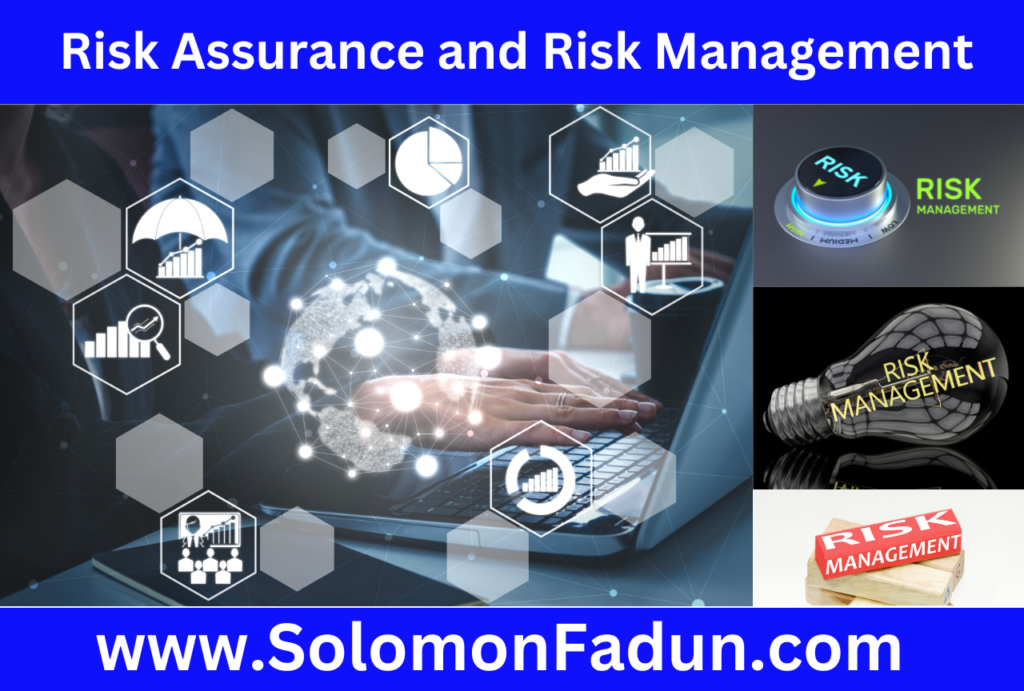Risk Assurance and Risk Management

This post discusses risk assurance and risk management.
WHAT IS RISK MANAGEMENT?
Risk management encompasses identifying, analysing, and responding to risk factors that form part of the life of a business. Risk management identifies, assesses, and controls threats to an organisation’s capital and earnings. Effective risk management means influencing future outcomes as much as possible by acting proactively rather than reactively.
Effective risk management offers the potential to reduce the possibility of a risk occurring and its potential impact. These threats or risks could stem from various sources, including financial uncertainty, legal liabilities, strategic management errors, accidents, and natural disasters. IT security threats, data-related risks, and risk management strategies to alleviate them have become a top priority for digitised companies. Hence, the importance of risk management within an organisation.
IMPORTANCE OF RISK MANAGEMENT
Risk management is beneficial to individuals, businesses, and organisations. Effective risk management ensures that risks of high priority are dealt with as aggressively as possible. Moreover, the management will have the necessary information that they can use to make informed decisions and ensure that the business remains profitable.
Essential benefits of risk management include:
1. Creates a safe and secure work environment for all staff and customers.
2. Increases the stability of business operations while also decreasing legal liability.
3. Protects from events detrimental to the company and the environment.
4. Protects all involved people and assets from potential harm.
5. Helps establish the organisation’s insurance needs to save on unnecessary premiums.
RISK MANAGEMENT STRATEGIES
Risk management strategies should also attempt to answer the following questions:
1. What can go wrong?
2. How will it affect the organisation? Consider the probability of the event and whether it will have a large or small impact. Consider both the workplace as a whole and individual work.
3. What can be done? What steps can be taken to prevent the loss? What can be done to recover if a loss does occur?
4. If something happens, how will the organisation pay for it?
RISK MANAGEMENT PROCESS
There are five basic steps in managing risks. These steps are known as the risk management process. Here are the five steps of a risk management process:
Step 1: Identify the Risk. The company identifies and defines potential risks that may negatively influence a specific company process or project.
Step 2: Analyse the risk. After identifying potential risks, the next thing is to determine the likelihood and consequence of each risk.
Step 3: Evaluate and Rank the Risk. The company must decide whether the risk is acceptable or severe enough to warrant treatment.
Step 4: Treat the Risk – also known as Risk Response Planning. During this step, companies assess their highest-ranked risks and develop a plan to alleviate them using specific risk controls.
Step 5: Monitor and Review the risk. This is where the company should use the Risk Register to monitor, track and review risks. The mitigation plan includes following up on risks and risk plans to monitor and track new and existing threats.
WHAT IS RISK ASSURANCE
The term assurance refers to the verification of risk mitigation and internal control. Risk assurance is an essential component of the overall risk management process. It embraces the tasks of internal audit management reviews and specialised audits that test and validate the control environment. The terms combined assurance and integrated assurance have become fashionable in recent times. These terms refer to the idea that a planned approach is adopted to arrange all of the various assurance providers.
This seeks to reduce duplications in audit processes and prevent any key controls from being missed by assurance providers. This approach to assurance typically has a risk foundation. The contents of risk registers are used to design the annual assurance plans. The audit committee will seek assurance that all the significant risks are well managed, and critical controls are effectively implemented.
Risk assurance in the modern enterprise is a team effort. There are at least seven job titles that address cyber security and compliance. So, what do the many types of risk assurance professionals out there do, anyway? What position does each person on the team play?
Clearly defining those roles and responsibilities is crucial for effective compliance because a business can only face two big mistakes with that clarity. First, you might have multiple roles focused on the same task. That breeds confusion, squanders resources, provokes office turf wars and hampers corporate efficiency.
PURPOSE OF RISK ASSURANCE
Assurance reporting aims to provide independent and objective information to our key stakeholders so they can gain assurance over effective risk management and be aware of any relevant material concerns that internal audit has. Internal audit is primarily concerned with risk assurance, involving the non-executive audit committee in a large organisation. The outcomes and impact of risk management activities are often reported to an audit committee in a large organisation.
BENEFITS OF RISK ASSURANCE
The benefits of adequate risk assurance include to:
1. Build confidence with stakeholders,
2. Provide reassurance to sponsors and financiers,
3. Demonstrate good practice to regulators,
4. Prevent financial and other surprises,
5. Reduce the chances of damage to reputation,
6. Encourage a sound risk culture within an organisation, and
7. Ensure a secure delegation of authority system.
SOURCES OF RISK ASSURANCE
Depending on the nature of the organisation, an audit committee may rely on some or all of the following sources of assurance.
1. Culture measurement,
2. Audit reports,
3. Unit reports,
4. Performance of the unit, and
5. Unit documentation.
RISK ASSURANCE PROFESSIONALS’ ROLES
Here are seven significant risk assurance professional roles:
1. Chief Information Security Officer (CISO),
2. Internal Auditor,
3. External Auditor,
4. IT Auditor,
5. Compliance Officer,
6. Risk Officer, and
7. Privacy Officer.
See the full video on Risk Assurance and Risk Management: https://youtu.be/SrQbOcJATJM

VIDEO TIMESTAMPS
00:00 – Introduction
00:33 – Meaning of risk management
01:57 – Roles of risk management
02:42 – Meaning of risk assurance
04:37 – Purpose of risk assurance
05:17 – Benefits of risk assurance
05:49 – Responsibilities of the audit committee
08:15 – Risk assurance: Review and monitoring
08:58 – Sources of risk assurance
10:05 – Risk assurance professionals’ roles
10:35 – Roles of risk assurance
15:18 – What is General Data Protection Regulation (GDPR)?
16:28 – Roles of risk assurance profession within an organisation
19:10 – Conclusion

